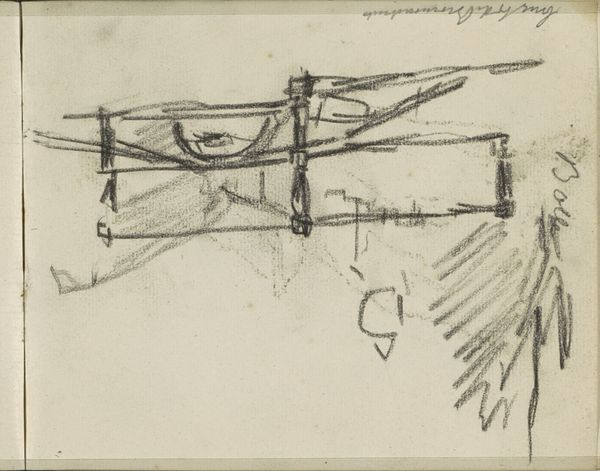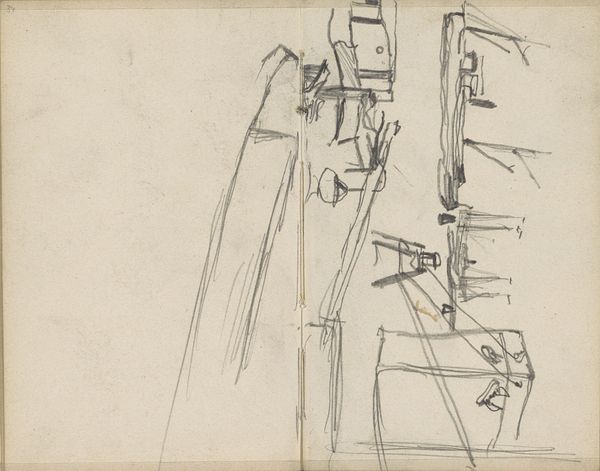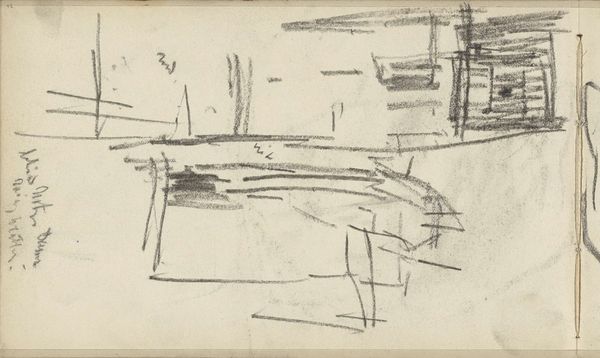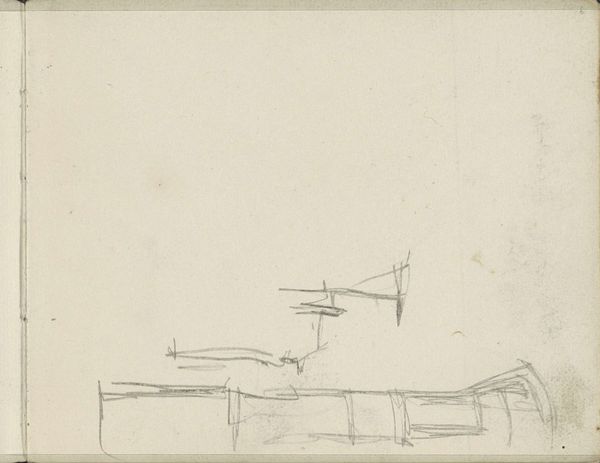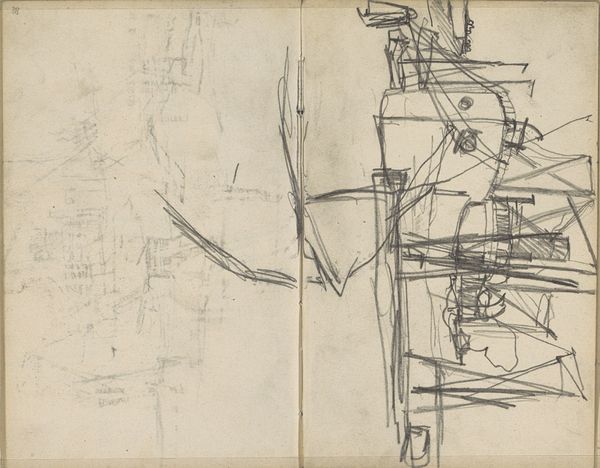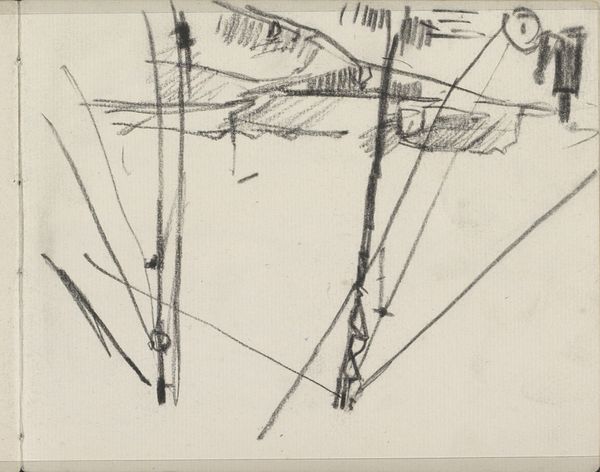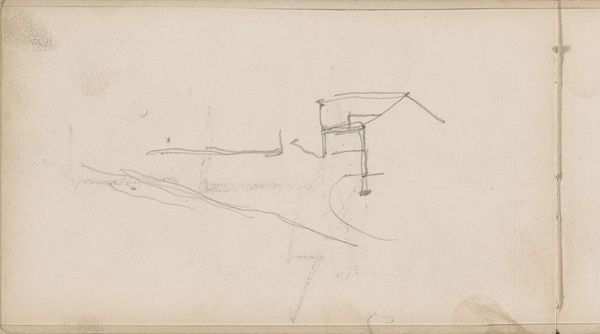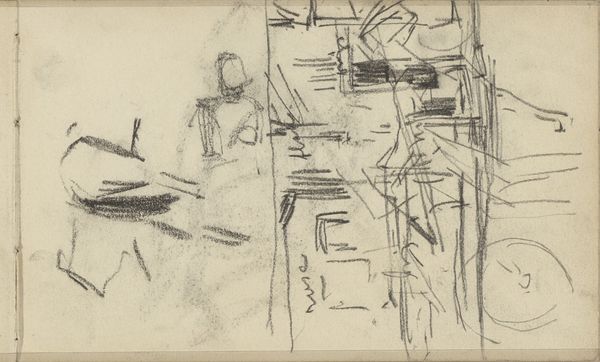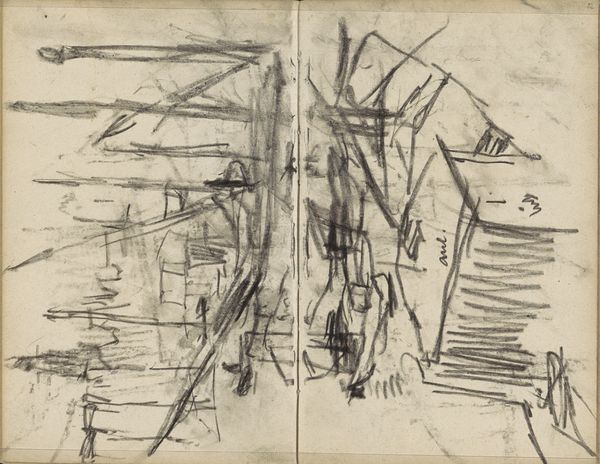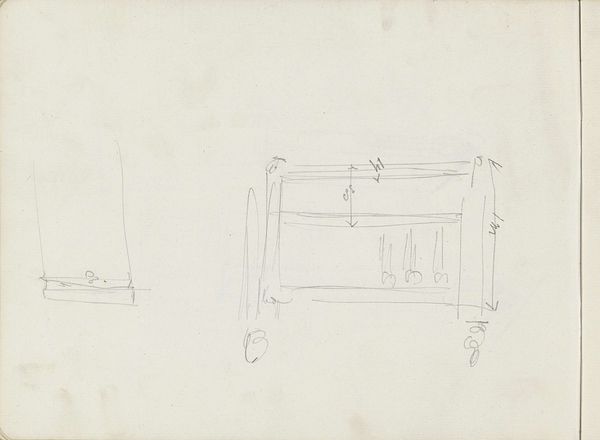
Eén of twee aangemeerde schuiten, mogelijk bij de Nieuwe Teertuinen te Amsterdam c. 1898 - 1914
0:00
0:00
drawing, paper, pencil
#
drawing
#
light pencil work
#
landscape
#
paper
#
personal sketchbook
#
idea generation sketch
#
sketchwork
#
ink drawing experimentation
#
pen-ink sketch
#
pencil
#
sketchbook drawing
#
storyboard and sketchbook work
#
sketchbook art
#
initial sketch
Copyright: Rijks Museum: Open Domain
Editor: This is George Hendrik Breitner’s pencil drawing, "Één of twee aangemeerde schuiten, mogelijk bij de Nieuwe Teertuinen te Amsterdam," dating from around 1898-1914. It looks like a page torn right out of a sketchbook. I find it kind of haunting, like a fleeting memory of industrial Amsterdam. What social realities might be embedded in this seemingly simple sketch? Curator: That’s a perceptive observation. It is easy to see this simply as a landscape sketch, but what is really compelling about this piece for me is thinking about what Breitner is choosing to depict. The Teertuinen were a hub of industry and labor. How does the starkness of this sketch, its emphasis on function over beauty, reflect the experience of the working class who would have populated this area? Editor: So, beyond just recording the scenery, he’s also pointing towards something about labor and the urban experience? Curator: Precisely. Breitner was known for his unflinching portrayals of Amsterdam, often focusing on the lives of ordinary people. Consider how the lack of embellishment and the quick, almost utilitarian lines mirror the relentless pace of industrial life and maybe, in its own way, give visual form to how dehumanizing and exploitative labor practices and class structures truly are. Editor: I never would have seen that depth without considering the social context. So much more than just a boat sketch. Curator: Absolutely! Art becomes truly powerful when we use it as a lens to examine the socio-political currents that shape our world, then and now. It really begs us to reflect on how labor and urban spaces intersect with class and identity.
Comments
No comments
Be the first to comment and join the conversation on the ultimate creative platform.
